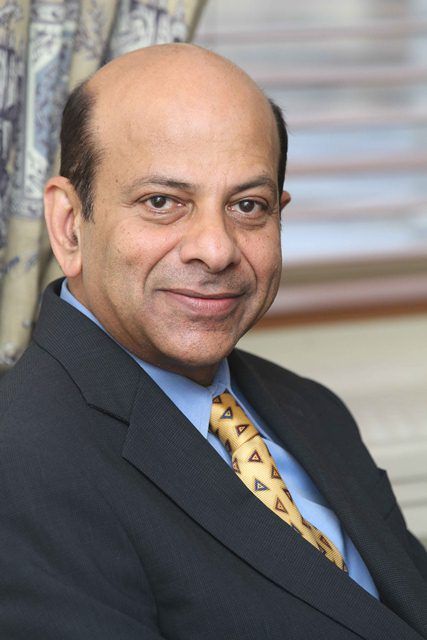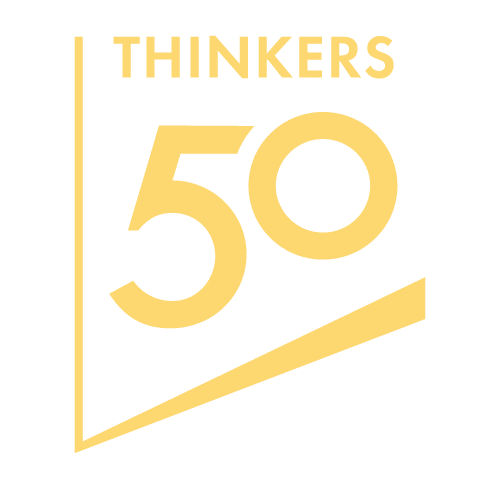
By Vijay Govindarajan and Hylke Faber
I sing Hallelujah to my soul
though it is raw and twisted and discovering.
At least it sees light where I had drawn
the shades, and become small.
—Yvonne Higgins Leach, Poet, former Boeing Communications Leader
Three Box Leaders know that great innovation is hard work. They manage the present (Box 1), systematically and selectively forget the past (Box 2) and create a new future (Box 3). And challenges like project failures and delays seem to come at every turn; often times, the bigger the innovation the bigger the obstacles. How do we stay the course?
Former public relations lead for Boeing, Yvonne Higgins Leach knows something about staying the course in challenge. In her 25 years with the company, Leach navigated the company through one of its toughest media challenges in decades: the troubled launch of the 787 Dreamliner. We sat down with Leach recently to talk about how she stayed the course through challenge in life. She offers simple yet profound advice.
Serving from your station
“Always serve from your station.” What does Leach mean by this phrase that kept her focused in difficult times?
In 2003, Leach got the opportunity of a lifetime. She was asked to lead global communications for the launch of the greatly anticipated Boeing 787 Dreamliner. With a new airplane being developed only once every 15 years, this was a rare opportunity. The program took off to a great start. Leach: “We did a lot of PR and marketing at first, going around the world telling everybody about the airplane … It was wonderful.” Then several years in, turbulence hit.
“We realized that the program had some issues,” Leach’s tone is different now. “In the two years from 2007 to 2009 we faced seven program delays. I’m telling you that was very, very difficult.” Little did she know just how challenging it would be.
“We would commit to ‘OK, we are going to fly the airplane in December,’ and then December came and we didn’t fly the airplane. And you know about the media around the world … you put a date out there and they are just all over it. It was all leading up to the first flight of the airplane because that’s what everyone anticipates. It’s a huge worldwide event.”
“In those two years, I’ve never had to be more resilient in my career. I was the one answering the media calls from around the world. It got rough. They were accusing me of lying; that we knew more; that it was impossible we couldn’t know what the problems were.”
How did Leach stay clear and focused? “I connect with my inner compass every day.” While at Boeing, being a mother and wife, she was up usually no later than 5:00 a.m. The first thing Leach would do in the morning is center herself.
“I think how you start your day is important. No matter how busy life is, you have to start by pausing and praying, meditation, or whatever you call it. If you can build 10 minutes in before you start your day to give yourself peace and quiet, it really helps. It fills you up to go do what you need to do. You find those 10 minutes and then you go into the craziness and you keep applying the little things, like breathing and asking yourself: OK, now what are we really here for? If you can do that, you can leave your ego behind and see that it’s not about you. It’s about the employees who report to you, it’s about customers coming in, it’s about the product, and it’s not really about you.”
Connecting with her inner compass gave Leach two strengths then. First she gained clarity on the higher purpose of her work so she could fly above the doubt and desperation that surrounded her. “I thought, ‘I’m not going to let it get to me. Airplanes are hard and require a lot of risk and that’s what it takes to be innovative. This airplane is going to change the world and, sure, two or more years of hardship, then that is what it takes.’”
Secondly she reframed her relationship with the media. Amidst the bad press and accusations, Leach could have viewed the media as the enemy, as an outside force to manage and control. She didn’t; she let go of that way of thinking and put it in Box Two. Instead she saw that they were doing their best, just as she was. Leach’s empathy led her to communicate with compassion and strength. “The media didn’t walk inside of the walls of Boeing; they didn’t see all the hard work and the difficult decisions that were being made. I understood how hard it must be for them to communicate what was actually happening, which is the media’s job. So my job was to try to give them more understanding, and that’s where I had to dig deep and take deep breaths, asking my inner compass, ‘Please help me tell these stories so there is more understanding.’”
Leach stayed grounded through a very turbulent 2 years. She instilled confidence and clarity in herself and her team, connecting with her inner compass, one day at a time. “I just had to breathe in and out … before the phone started ringing, and I would say to myself, ‘OK, this is why I’m here. This is my station. I’m the one.’”
Act Courageously on Your Compass
When we connect to our inner compass, we tend to become clearer and clearer about who we really are, and our purpose in life. Sometimes that clarity can lead to major shifts that connect us to a higher purpose.
“Yes, I changed stations recently, that’s right!” says Leach, upbeat now. “I was always working towards retiring at age 55. Two huge things happened to me at age 53. One, I had my manuscript of poetry accepted for publication. So, all my life while I was raising a family and working this job, I was writing poetry and determined not to give up on that. As crazy and hectic as life got, I thought, ‘no, this is a big part of who I am and I’m not going to sacrifice that’. It took a long time, but finally the manuscript was accepted for publication in December 2013 and they said it would be released in 2014. Then in January 2014 my mom passed away. She was very influential in my life and in all my siblings’ lives, and her loss was huge. With my book coming out in June, I just thought, you know, life is too short. I need to make a change.”
Connecting to her inner compass, Leach courageously took a big step in forgetting the past that was no longer serving her (Box 2), and created a new future for herself (Box 3). “Sometimes we feel we have to keep moving forward and fast to succeed. But I think that if we were to slow down and breathe and see what comes, we would do even more important work,” reflects Leach on her decision. “Be sure to pause and see what’s there, before you get so wrapped up in the action. It’s like that phrase, which is almost a cliché: Slow down to go fast. I really believe that’s true.”
Honoring your life’s station
So what are we here for at our different stations in life? Leach offers sage advice for innovating ourselves through the decades.
“If you’re in your 20s, I’d say just do your best. Don’t give in to the chaos; there’s a lot of that in the way. Just do your best and the right thing will happen.
“If you’re in your 30s, really explore your purpose, because sometimes you can be led somewhere and think it is the right thing for you, while it may not be. It’s OK to push the boundaries. If you’re not really feeling a sense of joy in your work by this time, it could be time to really think about making a change and be courageous.
“For the 40s, I would say this is really the time when you are going to make a difference or not. This is the time to realize it is not about you, and you truly can make an impact on the world in a positive way. This is your decade. This is when you really need to make the difference.”
And for people in their 50s? “If you don’t have balance, you better get it because life is more than work. If you are in your 50s and everything is about work, you may be ignoring important things in your life, like family, your health, your hobbies, or your internal growth. Then you may need to make a change.”
At a deeper level, Leach captures the essence of Three Box leadership—have the courage to be in the present (Box 1), let go of what no longer serves (Box 2), and create the new (Box 3). Do all this, knowing full well that the new will become old again and will need to be let go of as the cycle repeats. We grow in our capacity to lead every time we are present, every time we let go of what is no longer true, and every time we step forward and follow our inner compass to create what wants to come forth.
Leach’s words and life story point to the same question she asks herself every morning: How can I serve from my station? She bravely follows her inner guidance and nudges us to do the same, whatever it takes. What would happen if each of us fully owned our life’s station and served from that place? Where would it take us? Where would it take you?
Vijay Govindarajan is the Coxe Distinguished Professor at Dartmouth’s Tuck School of Business and a Marvin Bower Fellow at Harvard Business School. He is a WSJ and NYT best-selling author, and author of Three Box Solution: A Strategy for Leading Innovation, HBR Press, April 2016. Watch the book trailer. Twitter: @vgovindarajan.
Hylke Faber is CEO of the Growth Leaders Network, a non-profit supporting a global community of leaders committed to self-growth and selfless service, and is Managing Partner of the culture and leadership consultancy Constancee. Hylke also directs the Leading as Coach programs at the Columbia Business School Executive Education program.

Thinkers50 Limited
The Studio
Highfield Lane
Wargrave RG10 8PZ
United Kingdom

Thinkers50 Limited
The Studio
Highfield Lane
Wargrave RG10 8PZ
United Kingdom

Thinkers50 Limited
The Studio
Highfield Lane
Wargrave RG10 8PZ
United Kingdom
| Cookie | Duration | Description |
|---|---|---|
| LANG | 9 hours | Linkedin set this cookie to set user's preferred language. |
| nsid | session | This cookie is set by the provider PayPal to enable the PayPal payment service in the website. |
| sp_landing | 1 day | The sp_landing is set by Spotify to implement audio content from Spotify on the website and also registers information on user interaction related to the audio content. |
| sp_t | 1 year | The sp_t cookie is set by Spotify to implement audio content from Spotify on the website and also registers information on user interaction related to the audio content. |
| tsrce | 3 days | PayPal sets this cookie to enable the PayPal payment service in the website. |
| x-pp-s | session | PayPal sets this cookie to process payments on the site. |
| __cf_bm | 30 minutes | This cookie, set by Cloudflare, is used to support Cloudflare Bot Management. |
| Cookie | Duration | Description |
|---|---|---|
| l7_az | 30 minutes | This cookie is necessary for the PayPal login-function on the website. |
| Cookie | Duration | Description |
|---|---|---|
| CONSENT | 2 years | YouTube sets this cookie via embedded youtube-videos and registers anonymous statistical data. |
| _ga | 2 years | The _ga cookie, installed by Google Analytics, calculates visitor, session and campaign data and also keeps track of site usage for the site's analytics report. The cookie stores information anonymously and assigns a randomly generated number to recognize unique visitors. |
| _gat_gtag_UA_10408481_1 | 1 minute | Set by Google to distinguish users. |
| _ga_ZP8HQ8RZXS | 2 years | This cookie is installed by Google Analytics. |
| _gid | 1 day | Installed by Google Analytics, _gid cookie stores information on how visitors use a website, while also creating an analytics report of the website's performance. Some of the data that are collected include the number of visitors, their source, and the pages they visit anonymously. |
| Cookie | Duration | Description |
|---|---|---|
| NID | 6 months | NID cookie, set by Google, is used for advertising purposes; to limit the number of times the user sees an ad, to mute unwanted ads, and to measure the effectiveness of ads. |
| test_cookie | 15 minutes | The test_cookie is set by doubleclick.net and is used to determine if the user's browser supports cookies. |
| VISITOR_INFO1_LIVE | 5 months 27 days | A cookie set by YouTube to measure bandwidth that determines whether the user gets the new or old player interface. |
| YSC | session | YSC cookie is set by Youtube and is used to track the views of embedded videos on Youtube pages. |
| yt-remote-connected-devices | never | YouTube sets this cookie to store the video preferences of the user using embedded YouTube video. |
| yt-remote-device-id | never | YouTube sets this cookie to store the video preferences of the user using embedded YouTube video. |
| yt.innertube::nextId | never | This cookie, set by YouTube, registers a unique ID to store data on what videos from YouTube the user has seen. |
| yt.innertube::requests | never | This cookie, set by YouTube, registers a unique ID to store data on what videos from YouTube the user has seen. |
| Cookie | Duration | Description |
|---|---|---|
| DEVICE_INFO | 5 months 27 days | No description |
| loglevel | never | No description available. |
| m | 2 years | No description available. |
Thinkers50 Limited has updated its Privacy Policy on 28 March 2024 with several amendments and additions to the previous version, to fully incorporate to the text information required by current applicable date protection regulation. Processing of the personal data of Thinkers50’s customers, potential customers and other stakeholders has not been changed essentially, but the texts have been clarified and amended to give more detailed information of the processing activities.